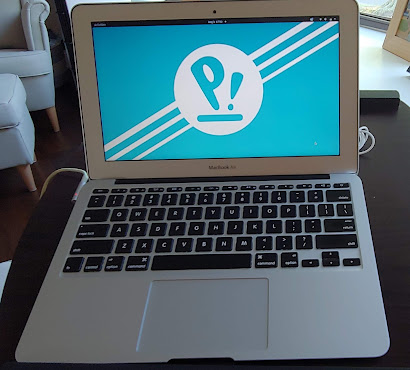 I own a few older MacBook laptops and Apple's support for them are unfortunately being phased out which means that the newer MacOs releases don't function on the older hardware. Typical Apple move to force consumers to purchase their newer hardware. I normally don't buy Apple products but I had to a few years back for some IOS projects I was working on years ago so admittedly I'm not a big fan of the company in general.
I own a few older MacBook laptops and Apple's support for them are unfortunately being phased out which means that the newer MacOs releases don't function on the older hardware. Typical Apple move to force consumers to purchase their newer hardware. I normally don't buy Apple products but I had to a few years back for some IOS projects I was working on years ago so admittedly I'm not a big fan of the company in general.Though I'm not a fan of the company itself. I do like the quality of the older MacBook devices. They are tanks for sure. Very well built sturdy shells and most of the innards and components are on the higher end quality of the spectrum compared to their competing products. Since the MacBooks are well built and Apple doesn't support their old hardware they're great machines to re-purpose with a fresh install of Linux and in this post I'll describe i
nstalling popOS Linux which is a very cool operating system produced by System76.
Upgrade MacOS to latest possible updates
So 1st thing update the laptop to the latest version of MacOs that you can. In my case MacOs High Sierra was the latest version I could install to my MacBook Air (mid-2011)
Partition the Drives from within MacOS using Disk Utility
Use the Disk Utility in MacOS to partition the drive for installing PopOs by following these actions.
NOTE: Backup all of your data before you do anything here. There is a risk your data can be corrupted or erased.
- In Disk utility click "View all Devices"
- Select the Top level Drive Disk (SSD or HDD)
- Click the Partition tab option to the right
- In this dialog click the + button and resize the existing MacOS partition to a lower size. I had a 250GB SSD so I made my MacOs partition 80GB.
- The new LINUX partition I resized to 160GB with MS-DOS (FAT) formatting
- Click the + button again and create a SWAP partition and size it to the same size as the RAM you have on that device. I had 4GB of RAM on my MacBook so my SWAP partition is 4GB with MS-DOS (FAT) formatting
- Click + one more time to add a BOOT partition sized to 1GB with MS-DOS (FAT) formatting
- Click apply in Disk Utility to re-partition and format all these changes.
Create a PopOS USB Installer
You'll need to create a PopOs USB installer so get a 4GB USB stick and you can use the balenaEtcher USB creation tool to easily burn the .iso file to the USB. Once you have this created you're ready to install PopOs.
Boot into the PopOS USB Installer
In the next steps we'll need boot into the USB stick so insert the USB installer into the MacBook and reboot the Mac into the Boot screen
- Turn on or restart your Mac.
- Immediately press and hold the Option key. After a few seconds, the Startup Manager appears
- Select the USB installer drive you created with PopOS on it
- After a few minutes you should be booted into PopOs installer running on from the USB stick.
Install PopOS
Installing PopOS is pretty straight forward and the trickiest part is formatting the partitioned drives. So let's get started.
- Click through all the language and keyboard preferences to your liking. I generally use the defaults
- You should now be presented with the Install dialog box
- Click the Custom (Advanced) button
- Click the Modify Partitions button
- You'll see multiple partitions here but you're only interested in the partitions that you created.
- Click the 1GB BOOT partition and select the /boot, ext4 + Format options
- Click the POPOS partition and select the /root, ext4 + Format options
- Click the SWAP partition and select the /swap, linux-swap + Format options
- Click the green apply arrow to make all the changes and begin installing the operating systems.
After PopOS is installed reboot the device and you should be able to boot into your newly installed PopOS Linux system.
I actually took it step further and completely removed MacOS from my laptop since I really don't need it and it was running much slower than a fresh install of Linux. Removing the MacOS partition requires some Resizing and movement of partitions and you may also need to partition in the Linux partition tools then reinstall PopOS if you don't want a Dual Boot system. Below is a pic of my single boot Linux partition map configured on my MacBook Air.
Conclusion
I just want to say that your mileage may vary YMMV when it comes to installing PopOS Linux on various MacBook devices. It seems as if the older the device the easier the install process so keep that in mind when installing. Also I've chosen PopOS Linux to install on my MacBook but you can follow the majority of this process to install other Linux distros like Ubuntu, Arch, Fedora etc. Of course there will be differences but I'm confident you can figure those out.
Thanks for reading
Comments
Post a Comment